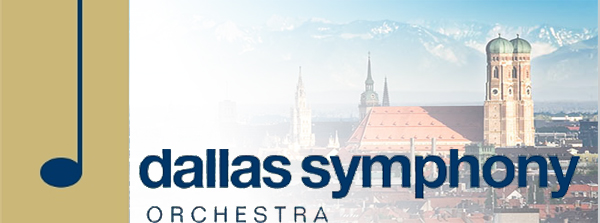 Germany Wagner, Korngold, Stucky, Strauss: Hilary Hahn (violin), Jaap van Zweden (conductor), Dallas Symphony Orchestra, Philharmonic Hall Gasteig, Munich, 17.3.2013 (JFL)
Germany Wagner, Korngold, Stucky, Strauss: Hilary Hahn (violin), Jaap van Zweden (conductor), Dallas Symphony Orchestra, Philharmonic Hall Gasteig, Munich, 17.3.2013 (JFL)
Wagner: Prelude & Liebestod from Tristan & Isolde
Korngold: Violin Concerto
Stucky: Elegy from August 4, 1964
Strauss: Rosenkavalier Suite

Just a month after Washington’s National Symphony Orchestra toured Europe (see reviews from Nürnberg & Frankfurt), the Dallas Symphony Orchestra under their music Director Jaap van Zweden did something much the same, with their string of concerts in Eindhoven, Amsterdam, Vienna (Konzerthaus), Munich, Frankfurt, Hamburg, and Hannover. Those last three cities were also on the NSO itinerary. Conveniently the Texans also stopped in Munich, though, where I heard them on Sunday with their second of two programs: Wagner’s Prelude & Liebestod, Steven Stucky’s Elegy from August 4, 1964, and Richard Strauss’ Suite from Der Rosenkavalier pivoting around the constant of the two programs, Erich Korngold’s Violin Concerto, performed by Hilary Hahn.
Has it really already been 8 years since I last heard Hilary Hahn in concert (and recital), when she played Prokofiev “with the lightness of a squirrel in ballet class”? She looks like the identical woman-version now, of the girlish tween she was then, and even her dress-sense has remained constant: “simple elegance… rare enough to warrant mention.” Back then it was green, this time it was black with lots of backside-insight.
  E.W.Korngold, Violin Concerto, G.Shaham / A.Previn / LSO DG    
|
I enjoy her no-nonsense playing, her lean tone, and her disinclination to romanticize anything. All that makes her naturally suited to the Korngold Violin Concerto, because she doesn’t run the danger of slipping into treacle-territory (Mutter/Previn) and she doesn’t have to ostentatiously underplay it (Heifetz/Wallenstein) for fear of overt sentimentality. She was backed nicely by the Texas band, her flageolets were divine, and she rocked the seductive rhythm of the finale with gusto. German critics will have slammed the work in the papers… “far too enjoyable” being their damning verdict. (I saw their lips getting thinner and more sour by the fabulous minute!) “Too Hollywood!” declared a colleague who usually avoids clichéd prejudices afterwards, backed by the rather obvious and hollow observation that “it isn’t Mozart”. Well, no, it ain’t Mozart. But just like Mozart, it’s meant to be great fun and entertain. And just like Mozart it succeeded at both: the audience, although looking sparse in less than half capacity filled 2500-seat Gasteig Philharmonic hall, had a blast. (They calmed down, before again erupting in applause, during the Bach encore.)
Mahler’s Sixth Symphony—the orchestra’s alternate program—would have been nice, too, but the Wagner-Stucky-Strauss program was full of Munich favorites also, and added the much welcome bit of Americana from Stucky’s Opera August 4, 1964. Elegy is loud (at first), consonant, lyrical, and rather a good fit for Wagner, Korngold, and Strauss, because it shows just how full the spectrum of “romantic music” really is… so full as to be nearly meaningless: from Beethoven’s Eroica via Brahms, Debussy, Berg, Reger, Sibelius, and a few others all the way to lovely Stucky. Richard Strauss’ Suite from Der Rosenkavalier—in a dramatic, gorgeous-stentorian performance—was the official icing on the cake, before Dallas & van Zweden topped it with a Slavonic Dance by Dvořák. It topped off an excellent—if not somehow miraculously great—showing that had begun impressively with the Wagnerian curtain-raiser which had unfolded powerfully, with extremely homogenous strings that created a muted plane of sound, from behind which cam American stereotype-defying buttery brass, all with deft rhythmic touches.
After the NSO’s very decent performances this was another sign (and perhaps a still more impressive one) that the second rank of American Orchestras need not shy away from any comparison to most top orchestras in most European cities.
Jens F. Laurson

